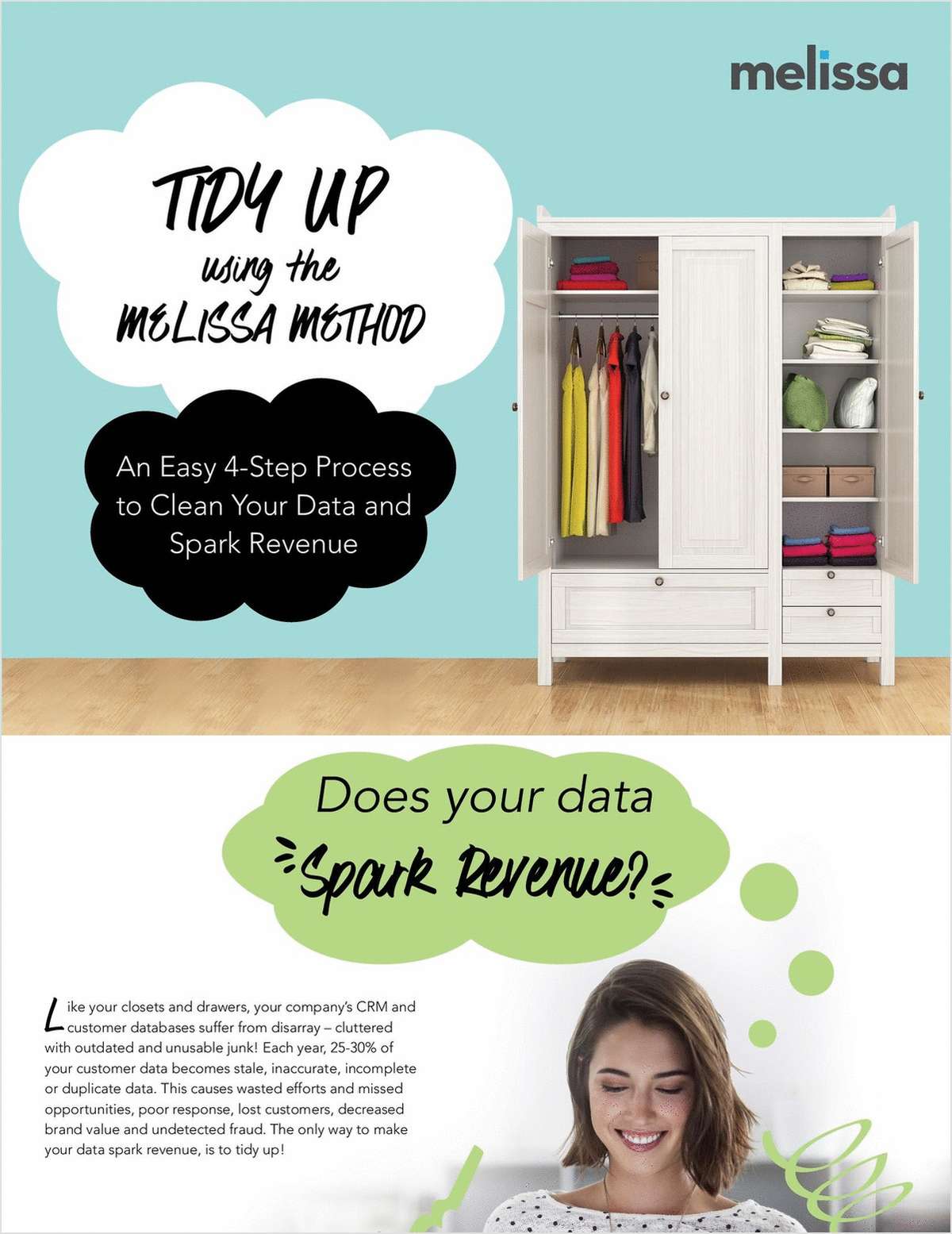In their little corner of the home office, actuaries are workingwith data and formulas to determine how much reserves should beheld on the companys balance sheet. They believe the assumptionsthey use to estimate these liabilities are consistent with thosebeing used in another corner of the building where the corporatefinance department is working on its view of the future performanceand profitability of the company. In still another corner of thebuilding, the claims department is examining its short- andlong-term obligations to its policyholders. Everyones working withthe same information, right?
|Maybe not. Some companies that are 50 years old have legacysystems they have to deal with, says Keith S. Hynes, CFO of Max ReCapital, Ltd., in Hamilton, Bermuda. It is hard to take all thesystems, even for a business that has been around only 10 years,and integrate them.
|While the highest-level managers may share information, its notnecessarily the same data from one department to the next. Theresalways the question, Are we looking at the same information? Therehasnt always been a place for insurers to share this information ina single facility, says Maryellen Coggins, principal consultantwith business consultancy PricewaterhouseCoopers.
|Max Re has had one advantage over other insurersits only threeyears old. Starting with a clean sheet of paper is very beneficial,Hynes says. Max Re was able to design its own capital managementsystem using the latest technology available.
|Better Tools Now
|For Max Re and other insurers, the tools needed to give them thebest view of the financial landscape have something in common:simulation. Coggins says there are a vast number of financial toolsand software options available to insurers today that not only helpmanage capital, but also allow for better analysis of the finances.As an actuary herself, Coggins points out loss reserving is onearea in particular that has improved today (see The AutomatedAdvantage).
|While there are several loss reserving software packagesavailable, Coggins says some insurers have built their own systems,relying on the talents of the actuaries to make the system workbest. The build vs. buy debate is important on the financial sideas well. As with any decision about build vs. buy, it often dependson the size of the insurer and the details it believes it needs toget into the system, says Coggins. As an example, she points tosmall property/ casualty insurers that focus on a single line ofbusiness. If that line of business is a short-tail line, theinsurer may not have as much need to use a detailed financial modelas another carrier might, so it might elect to build somethingin-house that is better suited to its environment, she says. Thelarger insurers, just by virtue of the complexity of the exercise,if they have built a model inside, it will need to be quitesophisticated.
|When Hynes speaks of managing risks and reserves, he stressescompanies need a quality data management system and the right data.In the life insurance industry, the data is pretty standardage,gender, health information. Other insurance lines are different. Ifyou are doing disability insurance, you are looking at the severityof the disability and what the disability is, Hynes says. Its awhole range of information.
|Reserves dictate policyholder surplus, premium ratio, how muchinsurance a company can write, and how much reinsurance it has tobuy to maintain the level of income it needs to go forward, saysTom King, solutions architect for solutions provider SAP America,Inc. Solutions are particularly important in the claims process, hesays.
|Many insurers find claims inflation is one of the biggestproblems they face in modeling the future. How much will a juryaward be three years down the road? Hynes asks. Thats what you aretrying to forecast, and its hard to do. Max Re also writesreinsurance for life companies, so predicting life expectanciesalso falls into its predictive modeling. We try to make the bestestimates of what those numbers are going to be, he says ofmortality rates and jury awards. You want to be within one or twopercent on an annual basis. You are going to get monthlyfluctuations, but it should average out.
|Asked if there is an industry standard for estimating reserves,Hynes answers no. Not everyone does things in a detailed mannerlike we do, he says.
|Too Much Is Too Much
|Over-reserving means capital is being kept inlower-interest-bearing accounts. Formerly a senior vice presidentwith Zurich Financial Services, Mark Borwick, co-founder of DFACapital Management, developed a simulation product to helpinsurance executives make and adjust their daily decisions. Priorto 9/11, the industry considered itself over-capitalized, Borwicksays. In the wake of 9/11 there was a realization there are eventsthat are unforeseeable. Therefore you had to craft strategies thatpermitted you to operate with an efficient amount of capital butallow for these kinds of events. Today there is concern overinsufficient capital.
|He says there are different ways of dealing with this issue. Oneway is to always have a lot of capital on your balance sheet so if[a catastrophe] happens youre ready, Borwick says. Technologyallows financial people to come up with a better alternative,though. Situations can be simulated so an insurer can determine howmuch capital would be needed to meet most situations. You alsocreate a contingent structure where you can either raise capitalquickly if an event occurs that is worse than you might haveexpected or this is some transaction under which you will receivewhat you need, he says.
|Coming from Zurich, Borwick says the trend globally as well asin the U.S. is toward more regulatory involvement. Insurers have tosatisfy statutory risk-based capital requirements, and regulators(and insurers) get nervous when they see what a major catastrophecan do to a companys bottom line.
|He suggests insurers examine their reinsurance needs closely. Ifyou can reduce reinsurance costs by 10 to 15 percent without anymeaningful change in your risk, thats an enormous bottom-lineadvantage, says Borwick. If you are able to deal with riskmanagement in a way that isnt haphazard, you have a way ofincreasing your return on capital enormously.
|Max Re lives by that advice. We use several programs, saysHynes. You focus on expected scenarios of cash flow, claimsstatements from our liabilities, and an asset simulator thatsimulates the expected cash flows from your assets. The companyknows it will have cash flow in, say, March 2004 but needsactuarial models and asset models to determine a range of thatpotential cash flow, according to Hynes._Max Re uses assetliability modeling to examine its current books to determine whenthe insurer will pay off the claims it knows it has compared withthe premiums it is going to collect. Determining the cash flow frompremiums is done through the book of business already written. Wehave the business that is already written, the expected claimsamount, and then theres the variation around that expected claimsamount, says Hynes. Every time a new transaction is written, themodel is updated. You are sitting there today looking at where youwill be if you never wrote any more business. And then thisafternoon we write another piece of business, we put it in thesystem, and that changes all the numbers. We model the actualbusiness we have on the books now, the actual bonds we hold, andthe actual securities we hold.
|Managing risk is not just handling the companys liabilities,thoughit also can include assets. We look at the risk of ourinsurance activities in relation to the other risks we havecreditrisk on our bond portfolio, interest rate risk, market risks onrisk assets and asset marketsso were looking at risk across thebalance sheet.
|The company also looks at its risks with software, opting to buymultiple modeling programs and integrating them into the system. Ifyou have several models from leading vendors you get moreinformation from having access to a lot of models, says Hynes. Thevalue we add is integration of the models. Over time you learnwhich ones tend to be more accurate in certain economicenvironments or certain situations. Says Hynes: Its a continuousprocess.
|The Automated Advantage
|When it comes to loss reserving, finding the happy mediumnot toomuch in the checking account and certainly enough to avoid theembarrassment of bounced checksis essential for a companyssustained well-being. Finding that balance may be better left totechnology. Maryellen Coggins, principal consultant withprofessional services firm PricewaterhouseCoopers, lists four majorbenefits to using a software solution in performing loss reservingwork that readily apply to other software solutions for use infinancial decision-making.
|The first is storage of your historical data in an error-freeenvironment, she says. Once its cleansed and its in the databaseunderlying the tools, you can use that data in multiple ways.
|The second benefit is the tools themselves. Actuarialcalculations, by their nature, are very detailed, she says. Thetools help avoid any human error that an actuary may make inperforming hundreds of calculations.
|Since reserve evaluations need to be updated frequently, thethird benefit is flexibility. To the extent the tool is flexible,it can be easily updated, she says. It would be very time consumingand repetitive for the actuary to recreate each valuation.
|A wider view of the business is a fourth advantage. To theextent the tool is built correctly, it can provide the actuary witha number of views, she says.
|Having clean data reserving actuaries can depend on is probablythe biggest advantage todays carriers have over the past, accordingto Coggins.
|Financial Systems Vendor Guide
|Allen Bailey & Associates, Inc.
Austin, Tex.
512-502-8800
www.allenbailey.com
AlphaSoft Marketing International
Nevada City, Calif.
530-478-1552
www.ialphasoft.com
BondEdge
Santa Monica, Calif.
310-479-9715
www.bondedge.com
Captiva Software
Miami, Fla.
800-274-8300
www.captivasystems.com
CSC Financial Services
Austin, Tex.
800-345-7672
www.csc-fs.com
Decision Research Corp.
Honolulu, Hawaii
808-949-8316
www.decisionresearch.com
DFA Capital Management
Purchase, N.Y.
914-701-7200
www.dfa.com
Epic Solutions, Inc.
Mesa, Ariz.
480-969-2720
www.epicsol.com
Exstream Software
Lexington, Ky.
859-296-0600
www.exstream.com
FirstApex
404-626-4679
www.firstapex.com
Fiserv AIS
West Des Moines, Iowa
800-322-4220
www.fiservais.com
Genelco Software Solutions
St. Louis, Mo.
800-983-8114
www.genelco.com
gotoPremiumFinance.com
Woodland Hills, Calif.
800-229-9822
www.gotopremiumfinance.com
Insurance Data Processing
Wyncote, Pa.
267-620-2388
www.idpnet.com
INFOEL USA, Inc.
Aubrey, Tex.
940-300-4623
www.infoelusa.com
Input 1, LLC
Woodland Hills, Calif.
800-229-9822
www.input1.com
Insight Decision Solutions, Inc.
Markham, Ont.
905-475-3282
www.insightdecision.com
Insurance Technologies Corp.
Carrollton, Tex.
800-383-3482
www.turborater.com
Pinpoint Solutions, LLC
Livingston, N.J.
973-716-0700
www.pinpnt.com
Princeton Financial Systems
Princeton, N.J.
609-987-2400
www.pfs.com
SAP America, Inc.
Newtown Square, Pa.
610-661-1000
www.sap.com
SeaTech Consulting Group, Inc.
Torrance, Calif.
310-328-8119
www.seatech.com
SOLCORP
Downers Grove, Ill.
630-960-4604
www.solcorp.com
SRC Software
Portland, Ore.
800-544-3477
www.srcsoftware.com
SS&C Technologies
Windsor, Conn.
800-234-0556
www.ssctech.com
SunGard Insurance Systems
Roswell, Ga.
303-283-5452
www.sungardinsurance.com
Tata Consultancy Services
Naperville, Ill.
630-505-9100
www.tcs.com
Visibillity, Inc.
Chicago
888-484-7424
www.visibillity.com
Whitehill Technologies, Inc.
Moncton, N.B.
630-579-1534
www.whitehilltech.com
Xerox Global Services
Rochester, N.Y.
770-569-5668
www.xerox.com
Want to continue reading?
Become a Free PropertyCasualty360 Digital Reader
Your access to unlimited PropertyCasualty360 content isn’t changing.
Once you are an ALM digital member, you’ll receive:
- All PropertyCasualty360.com news coverage, best practices, and in-depth analysis.
- Educational webcasts, resources from industry leaders, and informative newsletters.
- Other award-winning websites including BenefitsPRO.com and ThinkAdvisor.com.
Already have an account? Sign In
© 2024 ALM Global, LLC, All Rights Reserved. Request academic re-use from www.copyright.com. All other uses, submit a request to [email protected]. For more information visit Asset & Logo Licensing.








